This post may contain affiliate links. We may receive a small commission, at no cost to you, if you make a purchase. Read Disclosure.
Cyprus is a stunning Mediterranean island that offers visitors sun, sea and incredible sightseeing. It’s friendly locals welcome you with a smile, and the pace gets turned down a notch, allowing you to simply kick back and relax and let the stresses of daily life ebb away.

It’s famous for its gastronomy and wine culture, as well as its numerous historical attractions, since the island was once home to the Assyrian’s, Egyptian’s, Greeks, Persians and Romans throughout history.
Despite boasting a chilled atmosphere, there’s still so many things to do in Cyprus. In fact, there’s so much to see, I could write a book about it.
But if this is your first time to visit Cyprus, you had better make sure you add these attractions in Cyprus to your list…
Where is Cyprus?
Cyprus is a large island in the Mediterranean, just south of the Anatolian Peninsula. Geographically it sits 80km south off the coast of Turkey, and east of the Greek Island of Crete.
While many think it belongs to Greece, it is in fact its own nation. It became the Republic of Cyrpus in 1960 and became part of the EU in 2004.
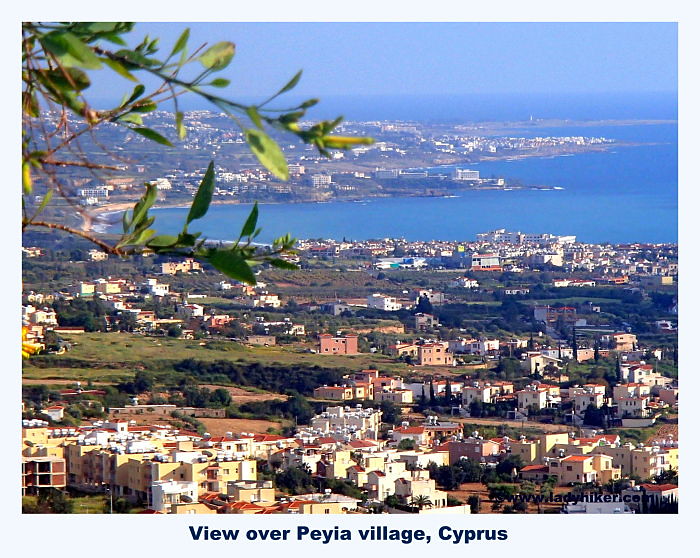
However, North Cyprus is a defacto state, also known as the Turkish Republic of Northern Cyprus. It makes up the northeastern part of the island and is recognised only by Turkey.
Despite being internationally recognised as part of the Republic of Cyprus, you still need to cross a border with your passport to enter North Cyprus.
Things to Do in Cyprus
Now that you are familiar with the geography, it’s time to take a look at the top things to do in Cyrpus!
Whether it’s your first time visiting Cyprus or you’ve been before, you must make sure you add these unmissable Cyprus attractions to your itinerary.
1. Visit The Adonis Baths
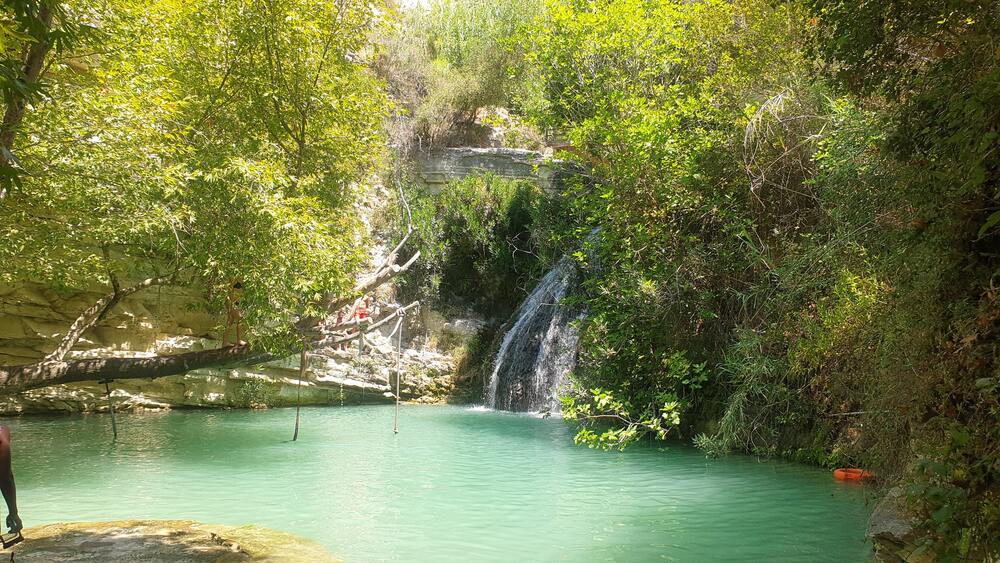
Just tucked away around the South Western tip of the Island is the Akamas peninsula. Delightfully undeveloped (largely due to the British commando’s unsociable habit of using it as a firing range) it’s a fabulous spot for a bit of hiking.
According to Legend, the crystal-clear waters of the bubbling spring marks where the Greek God Adonis and Aphrodite the Greek goddess of love used to bathe.
In true Hollywood style the Greek god Adonis stumbled upon the bathing goddess whilst out hunting. He was instantly bewitched.
A beautiful story spoilt only by the insistence of the locals that Aphrodite was in fact a huge tease and loved nothing more than to pit the gods against each other in a battle for her favours.
A perhaps kinder appraisal states that “Aphrodite was known more for lustful love than romantic love.”
2. See Turtles at Lara Bay
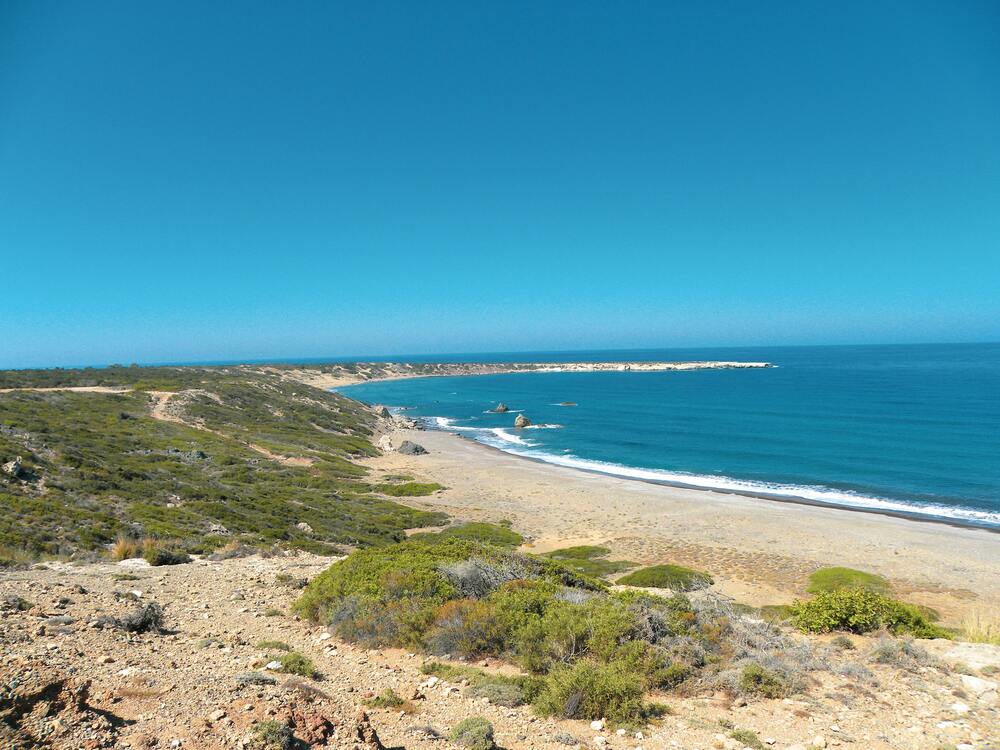
Moving eastwards along the coastline our eyes alight upon Lara Bay. This is a protected area for loggerhead turtles which return every summer to lay their eggs.
Fortunately, access is via a cratered, rough track which deters a huge flood of vehicles. However, the turtles are having a hard time of it.
They are increasingly confused by the glaring lights in nearby Paphos town and often struggle to stay on course for their nesting bay. I could cry.
3. Check Out The Harbor of Agios Georgios
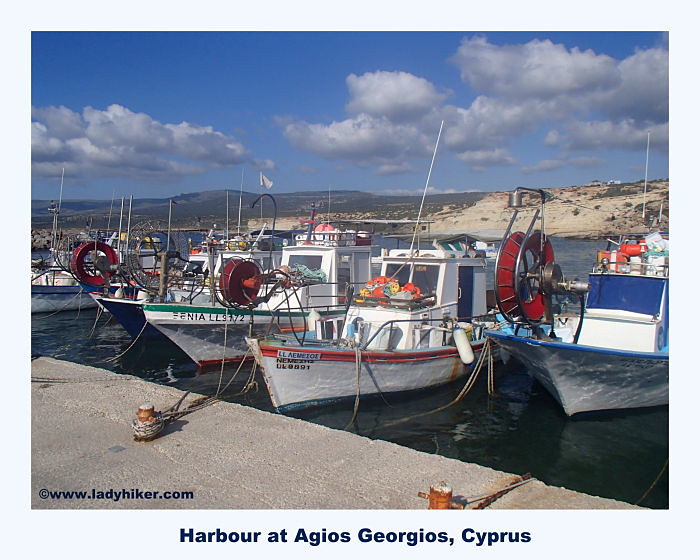
It’s the sheer serenity that strikes you here. A clutch of fishing boats, a taverna to immediately get to work as the catch is hauled in, and a typical Cypriot church.
My children were always highly amused by the antics of the lone ice cream man parked here who only switches the engine on in his van as potential customers appear.
This of course ensures that his produce is more runny cream than ice cream. No one minds. This is Cyprus.
4. Check out the Wreck of the Edro III at Paphos Sea Caves
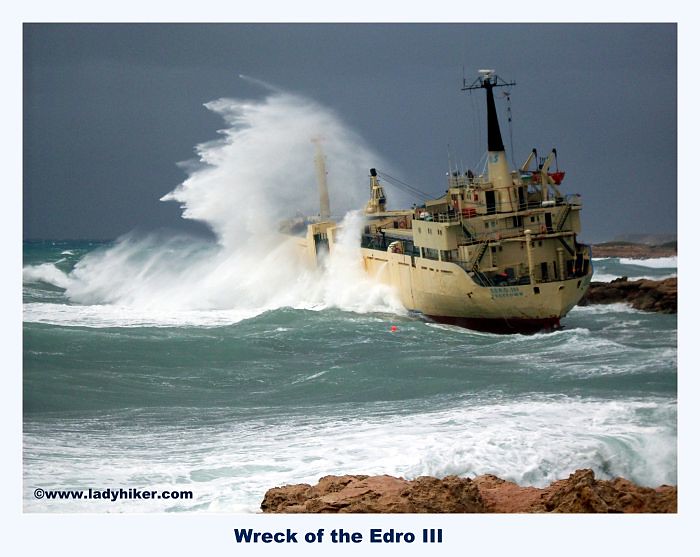
Sweeping our eyes along we reach the rocky shoreline of the Paphos Sea Caves and the unlikely tourist attraction of the wreck of the Edro III.
This ship ran aground in stormy weather on 8th December 2011 en route from Limassol to Rhodes. The crew were rescued, leaving the Captain and chief engineer on board to prevent the Cypriot’s from claiming salvage.
Although the ship looks incredibly close to the shore, it was still far enough away to prevent me lobbing over a few mince pies to the stranded crew on Christmas Day.
It’s not clear how the ship will be removed from the rocks but there is talk that it could be repaired and re-floated.
This is not far from Paphos’ other shipwreck, the MV Demetrios II which even has its own facebook page!
Swing your gaze further eastwards now.
5. Visit the Tombs of The Kings at the Kato Paphos Archaeological Par

The Paphos Archaeological Park is one of the most important archaeological sites in Cyprus and is a UNESCO World Heritage Site.
The ancient ruins contain the remains of an ancient Greek and Roman city, which is still under excavation today.
Findings are still showing evidence of life from prehistoric times all the way through to the Middle Ages.
Visitors can see the remains of important monuments such as Asklepieion, the amphitheatre, the Agora, the forty columns of Saranta Kolones Castle, the remains of an Early Christian Basilica, and even the Tombs of the Kings.
The Tombs of the Kings are an early burial site carved out of solid rock and dating from 300 BC. Bodies were buried with goodies such as jewelry and cosmetic boxes. However these have long gone due to persistent looting over the years.
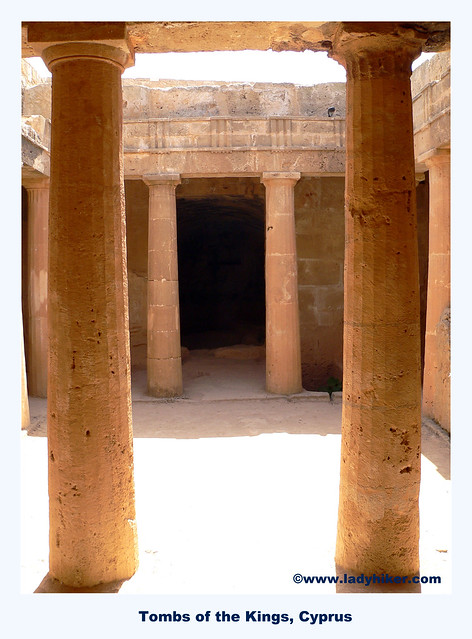
Do not be misled by the name – no kings are buried here. Simply the VIPs of Paphos.
This is an unmissable thing to do in Cyprus for history buffs.
6. Gaze Upon The Paphos Mosaics
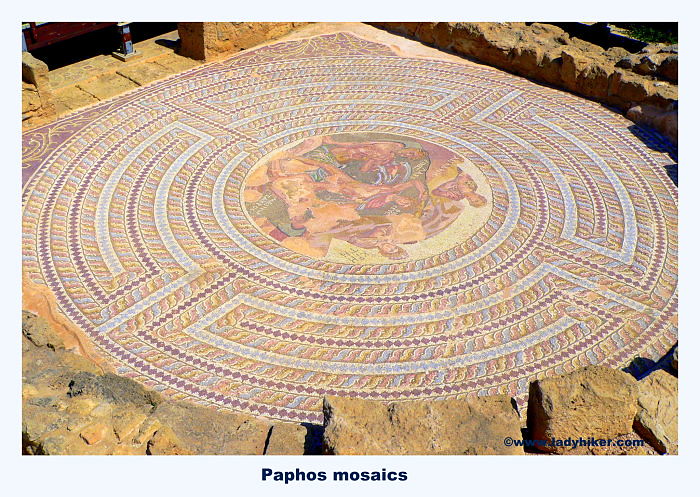
As happens very often in the islands of the Mediterranean, a farmer made an accidental discovery while he was ploughing his field.
He unearthed the Paphos Mosaics which would have originally been the floors of Roman noblesmen’s villas.
Here you will find superb mosaics including one showing the God of wine, Dionysus giving Ikarios the King of Athens the secret of viticulture. Nothing much changes!
7. Admire the Views of Aphrodites Rock (Petra Tou Romiou)
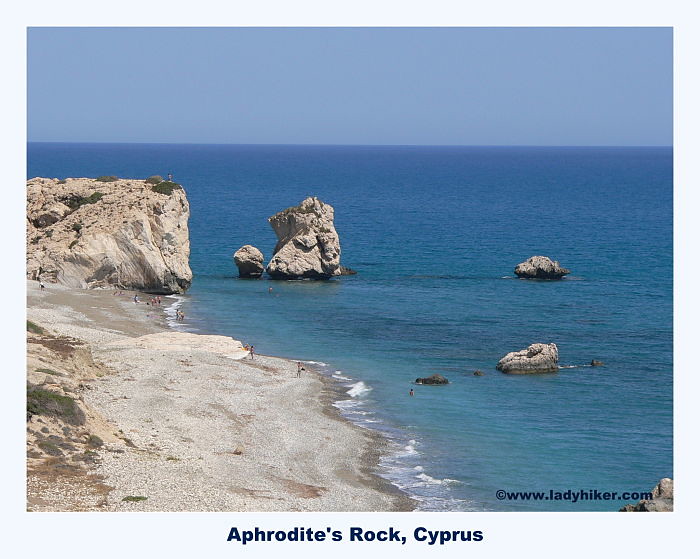
Just tucked around the headland at the eastern extreme of our view is Aphrodite’s rock, one of the most photographed rocks in the world.
A whole host of rumours surround this mythical birthplace of Aphrodite, mainly involving the bonuses to be gained from swimming around the rock.
These range from increased fertility to lashings of good luck and the one that particularly appeals to me – that if you swim around this rock at midnight during the full moon, Aphrodite will make you ten years younger. Readers, I shall attempt and report back.
8. Go Skiing in the Troodos Mountains
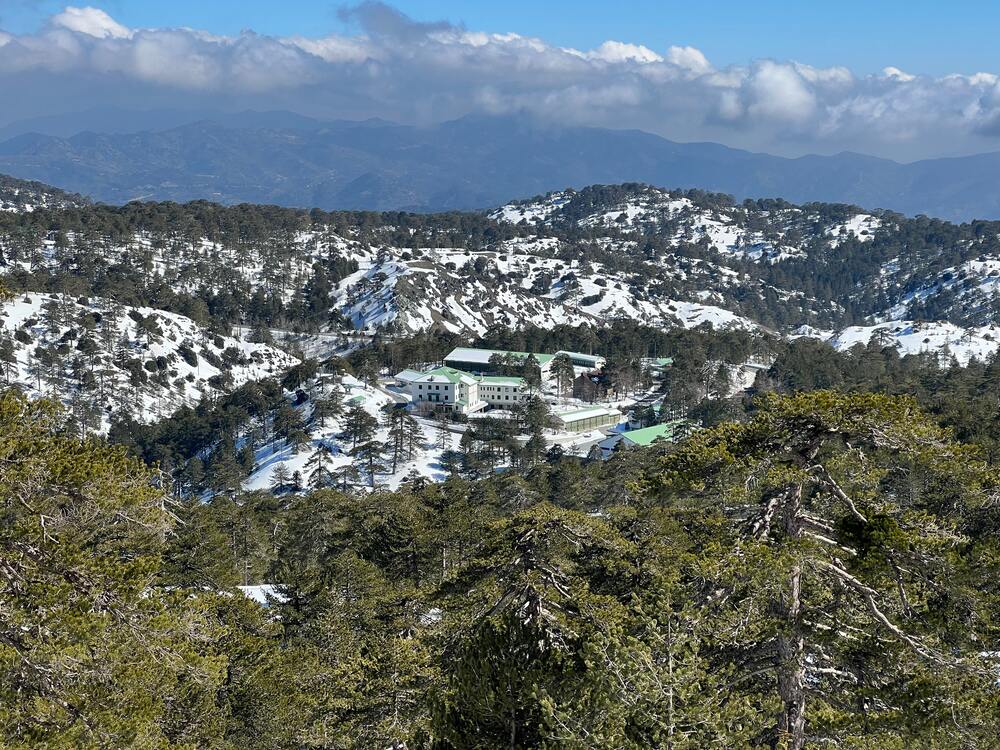
Located in the center of the island is the Troodos Mountains, the largest mountain range on the island. For the adventurer traveler, a ski trip to the Troodos is a must!
Yes that’s right, you can ski in Cyprus! While many think of Cyprus as a sunny destination, in the winter, you will find the snow-capped peaks of the Troodos offer excellent ski.
The highest peak is Mount Olympus, also known as Chionistra, which sits at 1,952 metres above sea level. The mountain has 4 kilometres of trails and slopes with 5 ski lifts, which is the largest ski resort on the island.
9. Check Out the Kykkos Monastery
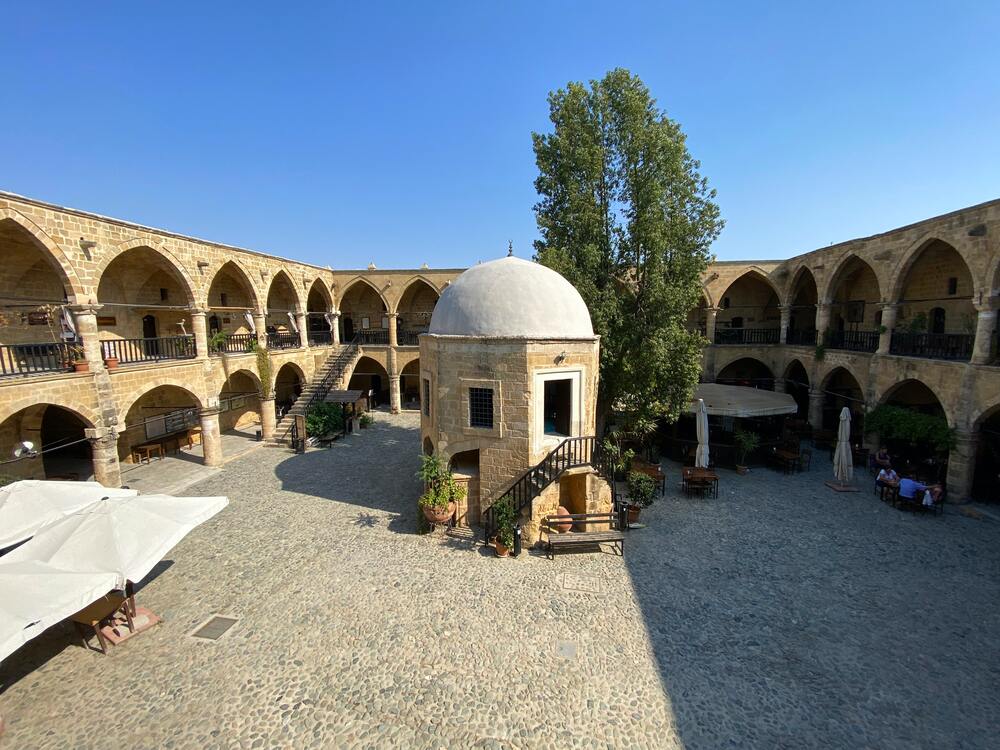
The Kykkos Monastery is one of the wealthiest and most famous monasteries in the country. It’s full name is the Holy Monastery of the Virgin of Kykkos and is dedicated to the Virgin Mary.
It was built at the end of the 11th century by Byzantine emperor Alexios I Komnenos, and there is a fascinating story behind this monastery and the icon of the Virgin Mary that lives here.
According to legend, a virtuous hermit, named Esaias, was living in a cave near the site of the monastery. When the Byzantine ruler of the land lost his way nearby hunting, he met Monk Esaias and asked for directions, but Esaias refused to answer him.
The ruler was angry and maltreated him, but years later, he fell sick, and asked God to cure him to he could go back and apologise. But God told Esaias what happened and asked the Ruler to bring the icon of the Virgin Mary to Cyprus.

Long story short, the Ruler bought the icon to Cyprus from its home in Constantinople, where it remains in the monastery today.
Over the centuries, locals have believed that miracles have taken place in front of the icon of the Virgin Mary, including a battle against a locust infestation in 1760.
Nowadays, the top half of the icon is hidden behind a protective covering, and locals believe anyone who looks at the icon will be blinded.
The last person to see the icon was Pop and Patriarch of Alexandria Gerasimos in 1669.
Even today the icon is rarely uncovered, and when it is, the fathers look away. Upon a terrible drought in Cyprus some years ago, the fathers took her icon to her throne and read a special service which stopped the rain, whilst not looking at the icon.
10. Visit Hala Sultan Tekke Mosque
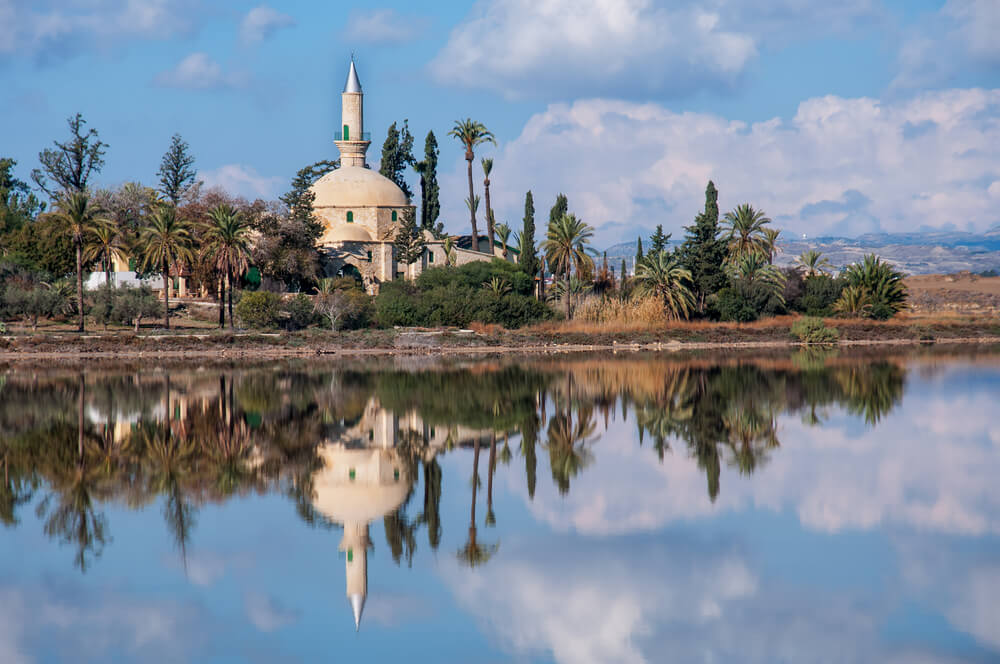
If you’re looking for stunning places to visit in Cyprus, then a visit to the Hala Sultan Tekke mosque should be high on your to-do list.
It sits on the western shores of the Larnaca Salt Lake, which is known for being the habitat of pink flamingoes, who migrate here during the winter months.
Aside from the beautiful surroundings, the mosque is one of the most important landmarks in Turkey.
It is the resting place of Umm Haram, who was believed to be the sister of the Prophet Mohammed’s foster mother. She died in 649 AD from a riding accident, and was left to rest in a prehistoric monument-tomb.
11. Go Back In Time at Kyrenia Castle
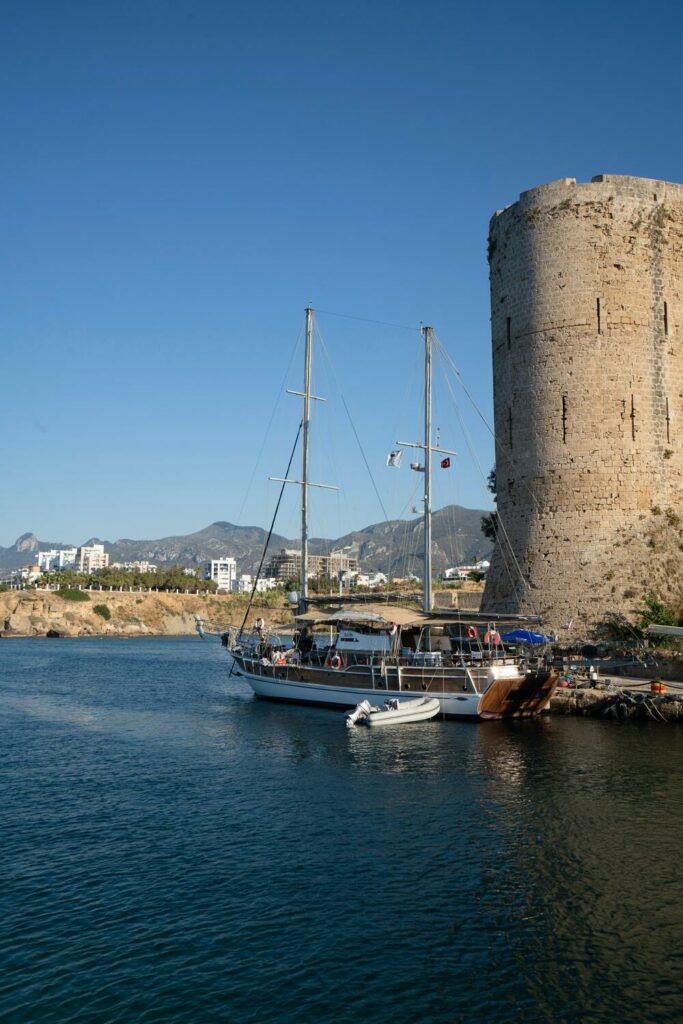
Kyrenia Castle is a 16th-century castle that was built by the Venetians. It’s one of the most beautiful castles in all of Cyprus, and should not be missed of your to-do list.
Inside the fortification’s walls is a 12-century chapel which has been turned into a museum containing the Shipwreck Museum.
The castle is located in North Cyprus, at the entrance to the Kyrenia Harbour.
12. Swim in the Blue Lagoon
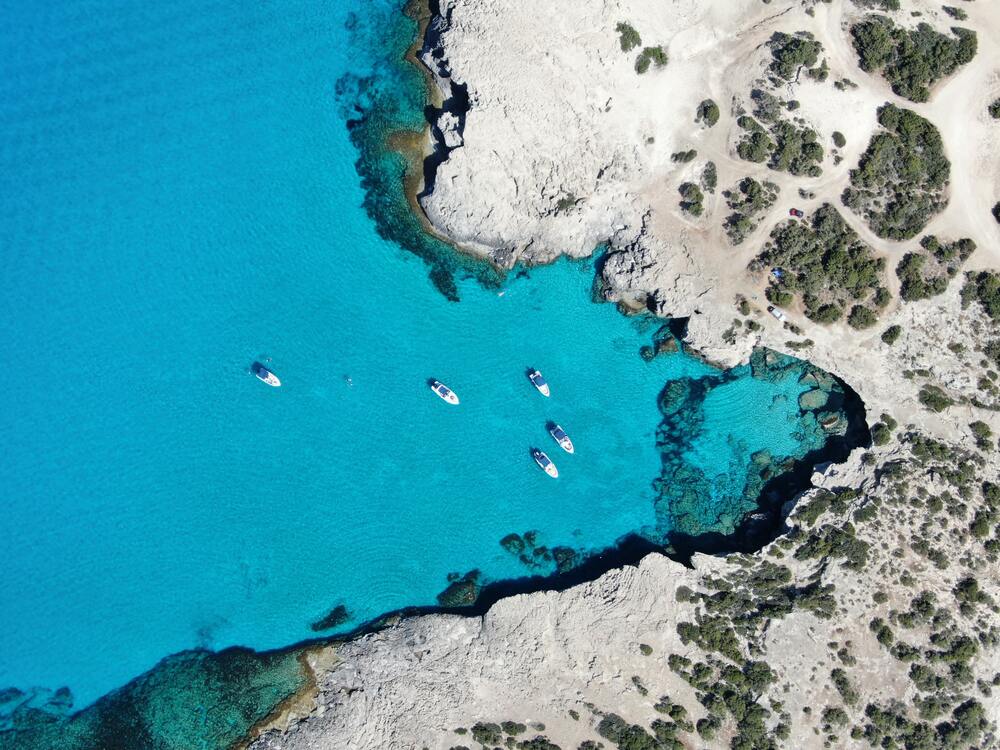
No visit to Cyprus would be complete without bathing in the turquoise waters that makes this island so famous. The Blue Lagoon is a remote cove in the Paphos region, on the west side of the island, and is perhaps the most beautiful of all of Cyprus’s waters.
It’s located in the Akamas Peninsula National Park and is great for snorkelling or relaxing.
The best way to get to the Blue Lagoon is on a boat tour, since there isn’t really a beach as such, and the area where it meets the land is quite rocky.
Still it’s definitely worth visiting, as it’s probably the most blue part of the island (hence the name!).
13. Visit the Beaches
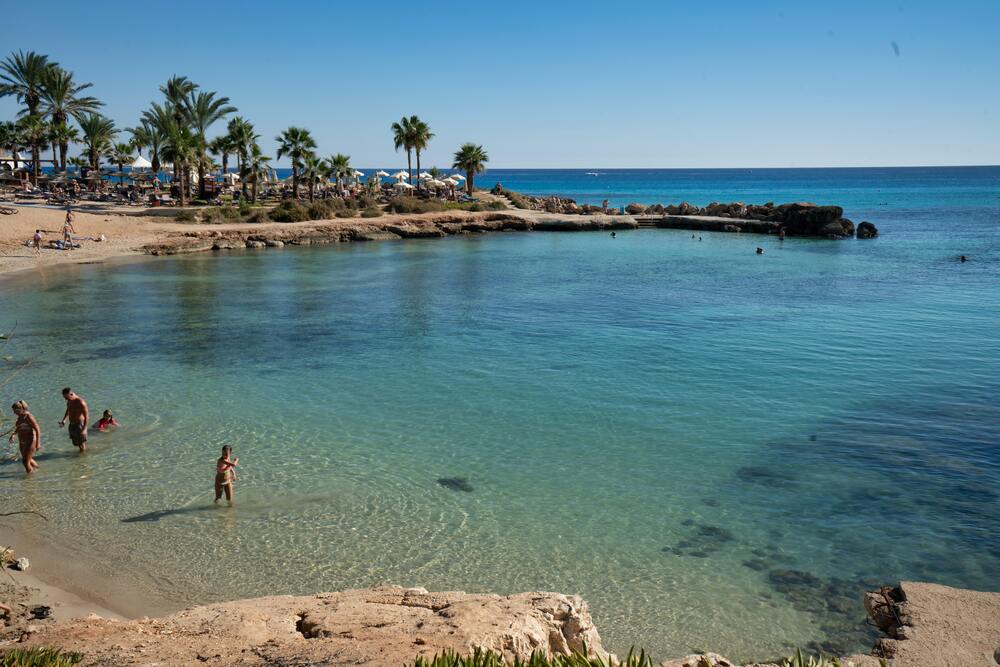
Of course, one of the top things to do in Cyprus is visit the beaches. There are 64 beaches in total on the island, but some of the most beautiful are in the Protaras region.
Fig Tree Bay is one of the most popular beaches. It’s a soft, golden sandy beach which was voted the third best beach in Europe by TripAdvisor in 2011.
For those looking for something more idyllic with white sand, another popular beach is Nissi Beach. This beach is lined with resorts with sun loungers and umbrellas for rent. The waves are gentle, so it’s great for families.
Coral Bay is another very popular beach, which is lined with resort hotels and beach bars on Coral Bay Avenue. You can also find dive centres offering scuba dive tours, and water sports rental shops here.
14. Walk around the Old Town of Nicosia
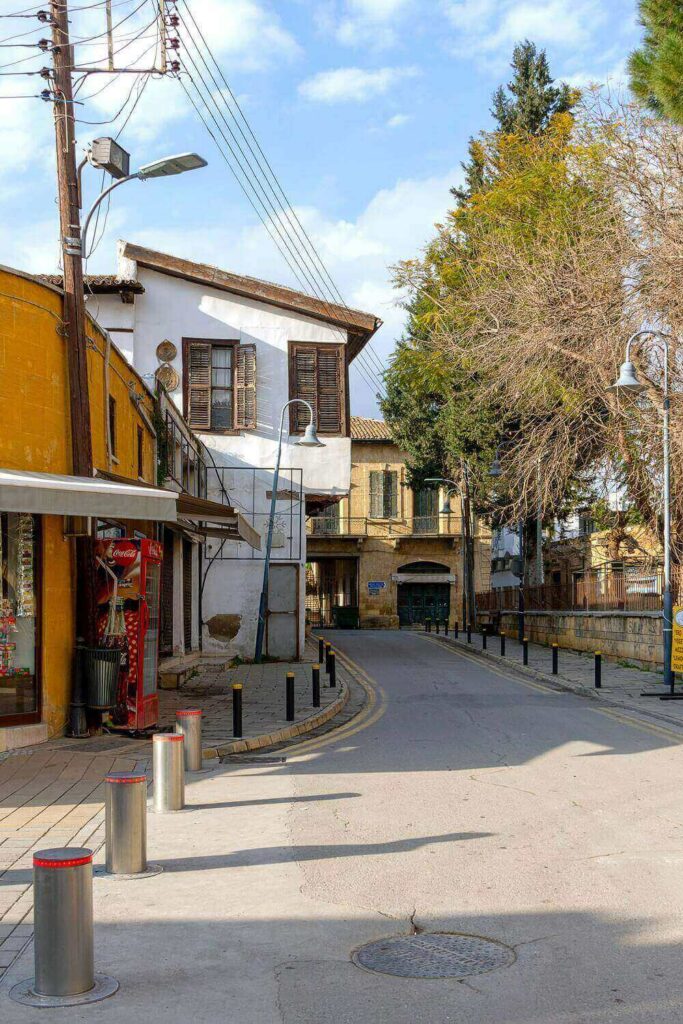
Nicosia is the capital city of Cyprus and is known for being the Europe’s last divided capital.
For those who are confused, the South side of Nicosia is the capital of the Republic of Cyprus and is the Greek side of Cyprus, but North Nicosia is the capital of the UN-unrecognised north Cyprus and is on the Turkish side of Cyprus.
You can see the dividing Green Line that goes through the middle of the walled old city that separated the two sides, and you even need your passport to pass through the border crossing.
Whichever side of Nicosia you stand, you will find plenty of historical monuments dating back to the ancient Greeks, Romans and Byzantine eras.
Arguably the most historical landmarks are on the Greek side, which has the Cyrpus Museum, Makarios Cultural Foundation Byzantine Museum, the Agios Ioannis Church, the Famagusta, Kyrenia and Paphos gates and the Faneromeni Church.
15. Visit Cape Greco National Forest Park
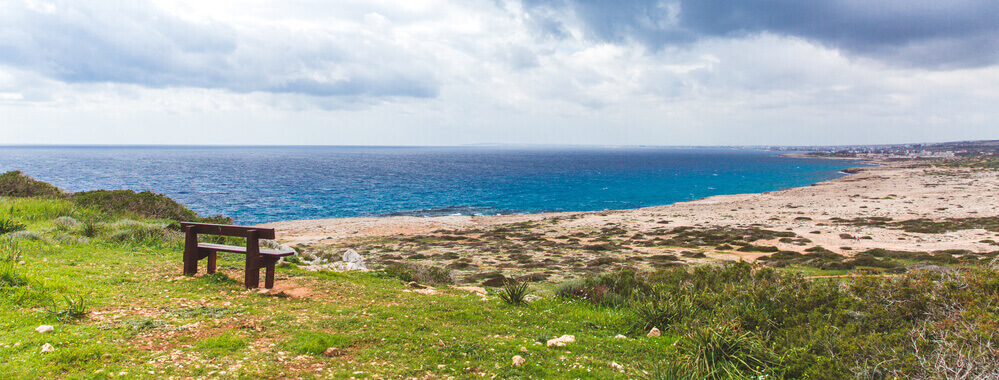
If you’re looking for outdoor things to do in Cyprus besides beaches, then the Cape Greco National Forest Park offers multiple hiking trails in its pine tree forest.
The park extends to the coast, where visitors can hike along the sea cliffs overlooking the Mediterranean below. You’ll find several benches along the way where you can stop and rest, whilst taking in the amazing vistas before you.
A popular hike is from Ayia Napa to Cape Greko National Park, which passes by several sea caves and craggy cliffs.
Best Time to Visit Cyprus
The best time to visit Cyprus is in the Spring, from late April until June. This is when the weather is dry and warm, but not too hot, and is just before the summer crowds come rushing here.
You will also find good weather in September, so if you want to avoid the crowds, mid to late September after the schools return is a great time to visit.
Final Thoughts on Things to Do in Cyprus
So there you have it, those are the best attractions in Cyprus and as you can see, it’s a destination that offers so much more than just relaxing on the beach.
Whether you’ve come looking for relaxation, some time bathing in the sun on the beach, a place to go skiing in the winter, or to marvel at archeological sites, there’s no doubt that Cyprus is the best place to visit for an all-round destination.
We hope this guide helped you plan your trip and gave you some inspiration for what to do in Cyprus.
Now, who fancies a sundowner?
Bio: Karen Guttridge is Ladyhiker. Fueled by wanderlust and the odd cake, she likes nothing better than donning boots and rucksack, noseying around the UK and Europe and getting up to endless mischief.
[ad_2]
Source link
